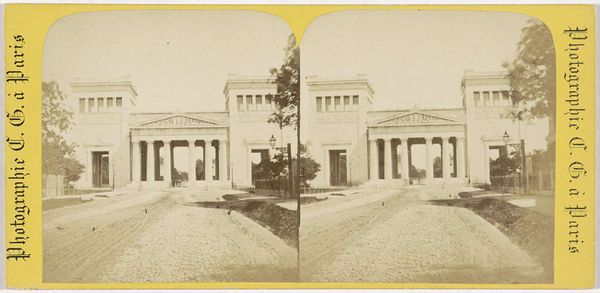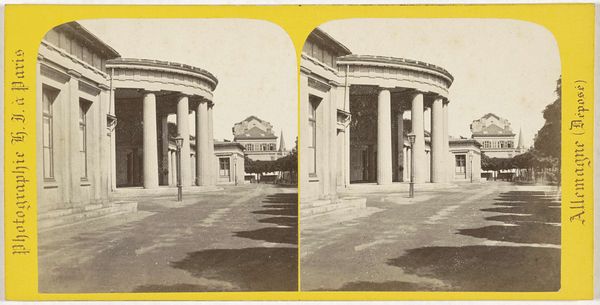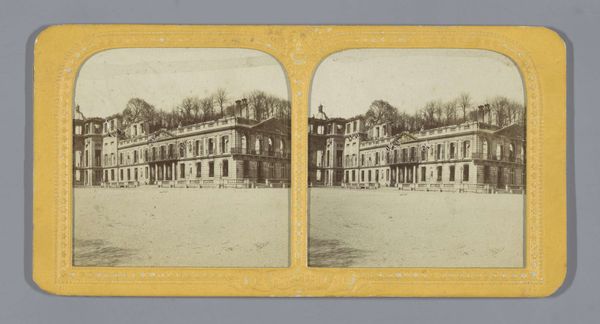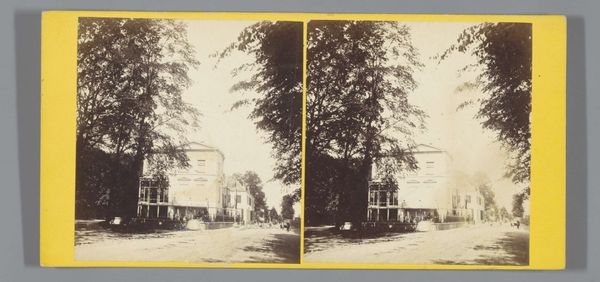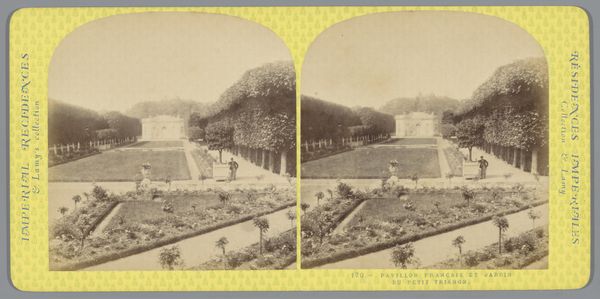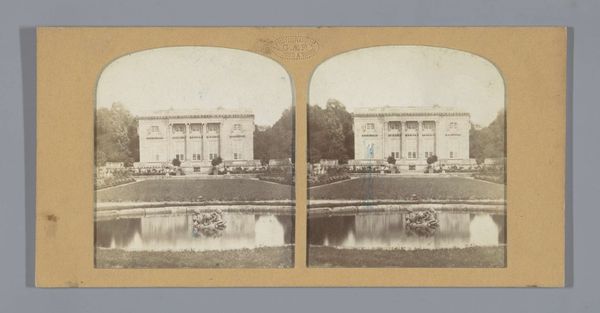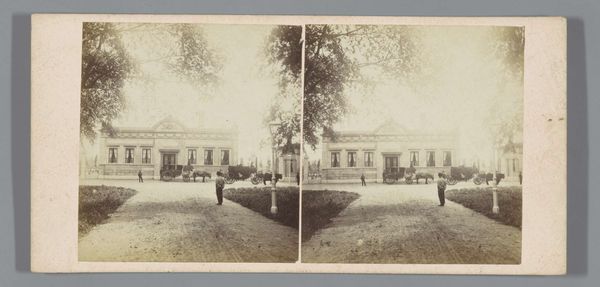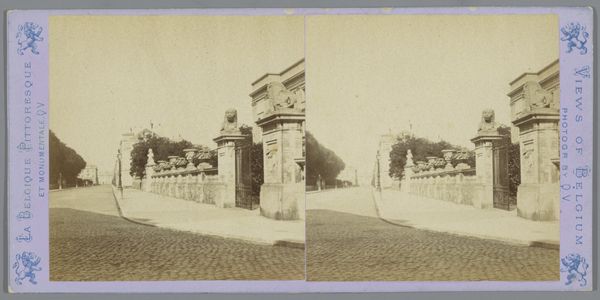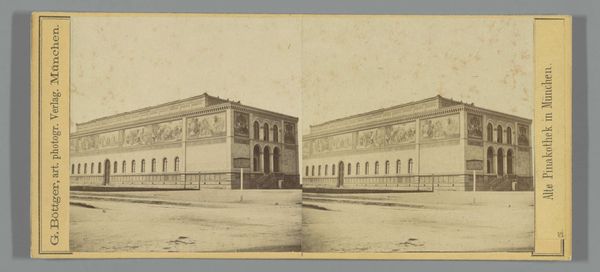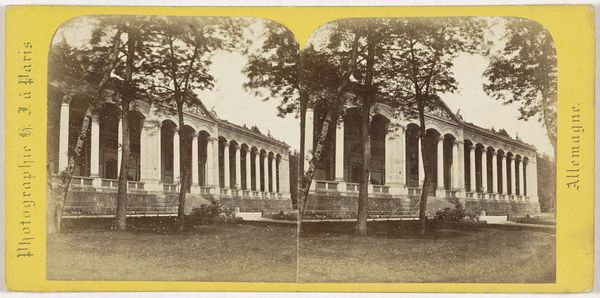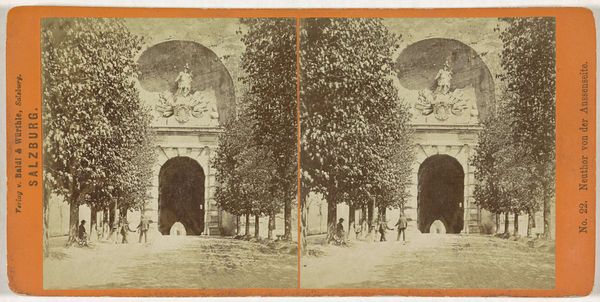
Promenade langs de zuilengalerij richting het Pavilon Křížového pramene, Mariánské Lázně 1855 - 1868
0:00
0:00
photography, albumen-print
#
16_19th-century
#
landscape
#
photography
#
cityscape
#
watercolor
#
albumen-print
Dimensions: height 88 mm, width 179 mm
Copyright: Rijks Museum: Open Domain
Editor: So, this is "Promenade langs de zuilengalerij richting het Pavilon Křížového pramene, Mariánské Lázně," taken between 1855 and 1868 by František Fridrich. It’s an albumen print depicting a colonnade and pavilion. The subdued tones give it a kind of timeless, melancholic feel. How do you interpret this work in its historical context? Curator: That melancholic feeling you’re picking up on, I think, is tied to the social history of places like Mariánské Lázně. These were spaces of leisure and recuperation, but also sites of intense social stratification. Who had access to these spas, and who was excluded? Consider the individuals pictured – their posture, their clothing; what stories do they tell about the power dynamics at play? Editor: That’s a great point! I hadn't considered the power dynamics within leisure. Are you suggesting that the photograph isn’t just a neutral documentation, but a record of those hierarchies? Curator: Exactly. Photography in the 19th century was never truly neutral. It was a tool used to construct and reinforce social norms. This image might present an idyllic scene, but beneath the surface are complex layers of class, privilege, and access. The architecture itself – the colonnade, the pavilion – speaks to a certain kind of aspirational lifestyle, available only to a select few. Editor: It's almost like the architecture performs a function beyond providing shelter, projecting an image of exclusivity and power. Is there something more we could unpack about the composition itself, perhaps the photographer's choice of perspective? Curator: The photographer's decision to emphasize the receding colonnade and distant pavilion creates a sense of depth, but also perhaps a sense of unattainability. Think about how this imagery may have influenced the way different social groups were represented, not just in photography, but more broadly across visual culture. Who was behind the lens, and what narratives were they crafting, consciously or unconsciously? Editor: Wow, that totally shifts how I see it. It's not just a pretty landscape, but a statement about social positioning. Thanks for highlighting those aspects! Curator: My pleasure. It’s crucial to read these images not as simple reflections of reality, but as complex cultural artifacts that can inform us of the underlying biases, norms, and ideologies that define us as a society.
Comments
No comments
Be the first to comment and join the conversation on the ultimate creative platform.

